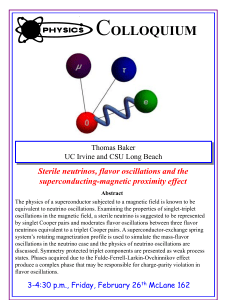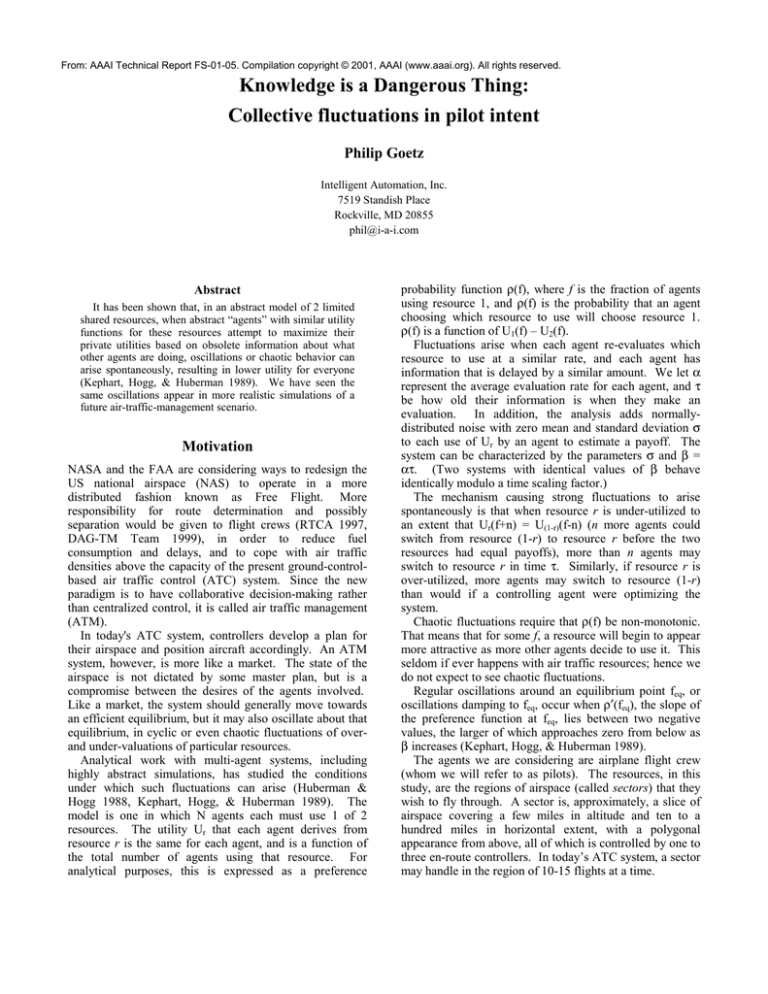
From: AAAI Technical Report FS-01-05. Compilation copyright © 2001, AAAI (www.aaai.org). All rights reserved.
Knowledge is a Dangerous Thing:
Collective fluctuations in pilot intent
Philip Goetz
Intelligent Automation, Inc.
7519 Standish Place
Rockville, MD 20855
phil@i-a-i.com
Abstract
It has been shown that, in an abstract model of 2 limited
shared resources, when abstract “agents” with similar utility
functions for these resources attempt to maximize their
private utilities based on obsolete information about what
other agents are doing, oscillations or chaotic behavior can
arise spontaneously, resulting in lower utility for everyone
(Kephart, Hogg, & Huberman 1989). We have seen the
same oscillations appear in more realistic simulations of a
future air-traffic-management scenario.
Motivation
NASA and the FAA are considering ways to redesign the
US national airspace (NAS) to operate in a more
distributed fashion known as Free Flight. More
responsibility for route determination and possibly
separation would be given to flight crews (RTCA 1997,
DAG-TM Team 1999), in order to reduce fuel
consumption and delays, and to cope with air traffic
densities above the capacity of the present ground-controlbased air traffic control (ATC) system. Since the new
paradigm is to have collaborative decision-making rather
than centralized control, it is called air traffic management
(ATM).
In today's ATC system, controllers develop a plan for
their airspace and position aircraft accordingly. An ATM
system, however, is more like a market. The state of the
airspace is not dictated by some master plan, but is a
compromise between the desires of the agents involved.
Like a market, the system should generally move towards
an efficient equilibrium, but it may also oscillate about that
equilibrium, in cyclic or even chaotic fluctuations of overand under-valuations of particular resources.
Analytical work with multi-agent systems, including
highly abstract simulations, has studied the conditions
under which such fluctuations can arise (Huberman &
Hogg 1988, Kephart, Hogg, & Huberman 1989). The
model is one in which N agents each must use 1 of 2
resources. The utility Ur that each agent derives from
resource r is the same for each agent, and is a function of
the total number of agents using that resource. For
analytical purposes, this is expressed as a preference
probability function ρ(f), where f is the fraction of agents
using resource 1, and ρ(f) is the probability that an agent
choosing which resource to use will choose resource 1.
ρ(f) is a function of U1(f) – U2(f).
Fluctuations arise when each agent re-evaluates which
resource to use at a similar rate, and each agent has
information that is delayed by a similar amount. We let α
represent the average evaluation rate for each agent, and τ
be how old their information is when they make an
evaluation. In addition, the analysis adds normallydistributed noise with zero mean and standard deviation σ
to each use of Ur by an agent to estimate a payoff. The
system can be characterized by the parameters σ and β =
ατ. (Two systems with identical values of β behave
identically modulo a time scaling factor.)
The mechanism causing strong fluctuations to arise
spontaneously is that when resource r is under-utilized to
an extent that Ur(f+n) = U(1-r)(f-n) (n more agents could
switch from resource (1-r) to resource r before the two
resources had equal payoffs), more than n agents may
switch to resource r in time τ. Similarly, if resource r is
over-utilized, more agents may switch to resource (1-r)
than would if a controlling agent were optimizing the
system.
Chaotic fluctuations require that ρ(f) be non-monotonic.
That means that for some f, a resource will begin to appear
more attractive as more other agents decide to use it. This
seldom if ever happens with air traffic resources; hence we
do not expect to see chaotic fluctuations.
Regular oscillations around an equilibrium point feq, or
oscillations damping to feq, occur when ρ′(feq), the slope of
the preference function at feq, lies between two negative
values, the larger of which approaches zero from below as
β increases (Kephart, Hogg, & Huberman 1989).
The agents we are considering are airplane flight crew
(whom we will refer to as pilots). The resources, in this
study, are the regions of airspace (called sectors) that they
wish to fly through. A sector is, approximately, a slice of
airspace covering a few miles in altitude and ten to a
hundred miles in horizontal extent, with a polygonal
appearance from above, all of which is controlled by one to
three en-route controllers. In today’s ATC system, a sector
may handle in the region of 10-15 flights at a time.
At present, pilots are unaware when filing a flight plan of
what sectors it will take them through, or how much traffic
may be in those sectors. The supposition is that, in the
future, pilots will have and make use of that information. If
we then suppose that pilots attempt to go around sectors
that are overbooked to avoid delays, then we may wonder if
oscillations of the sort seen in the simple 2-resource
analysis and simulations will occur in the skies with
airplanes carrying several hundred passengers each.1
Simulation
Intelligent Automation, Inc. (IAI) has developed an agentbased NAS simulator to study the possible behavior of
pilots and airlines when they are given more autonomy and
more information. We are using it to study the question
outlined above.
The supposition that different agents evaluate their
resource usage at similar rates is reasonable, especially if
(as seems most likely) this re-evaluation is done
automatically by software. The supposition that the age τ
of the information available is the same for all agents is
also reasonable if we suppose that this information is
reported through the ATM hierarchy and then made
available to all flight crew. Thus we did not model the
creation of individual values for α and τ, but coded them
directly into our pilot and controller models. (In fact, we
restricted α more strongly than in the analytical work,
making evaluations regular and periodic rather than
probabilistic.) We were more interested in the fact that
there are many resources, and each pilot has a different
utility function for each resource.
In our simulation, sXt is the number of spaces that will be
available in sector X that a plane wants to enter when the
plane arrives there at time t. The plane will be admitted iff
sXt ≥ 1. The pilot has available sXtp-τ, the estimate of sXt
made by the en-route controller at τ time units before the
present time p. Every 1/α time units, each pilot computes,
for each remaining sector on his flight plan, the probability
P(sXt ≥ 1), as the area to the left of sXtp-τ in the normal
distribution with mean .5 and variance σ2. If P(sXt ≥ 1)
drops below some threshold value for any number of
sectors on his flight plan, the pilot computes an alternate
flight plan going around those sectors, and then compares
the utilities of the old flight plan and the new flight plan.
Utility is defined as the probability of success divided by
the length. The probability of success of a flight plan is
defined as the product of P(sXt ≥ 1) over all sectors in the
flight plan. If the new flight plan has higher utility, the
pilot switches to it, and declares his intent to all of the enroute controllers on both the old and new flight plans.
1
Delays are more commonly caused by limited acceptance
rates at airports than by sector congestion. However,
airplanes do not commonly route to alternate airports when
their destination airports are busy, so we did not study this
case.
We used a simplified airspace with square sectors.
Flights are generated randomly, with no bias towards
particular regions or routes in the airspace, so that all
sectors are, on average, comparable.
Predictions
Regions of stability
Suppose there are two sectors side-by-side, A and B, A
being west of B. Consider all south-to-north and north-tosouth flights in an area centered on A+B (the area of A
joined with B). Suppose every sector is allowed to contain
up to m flights at any one time. To make our equations use
the f notation above, we will write them in terms of fXt = (m
- sXt) / m. A and B have different utilities to each
individual flight, but suppose they have an equal average
utility U to all these flights. Expected utility E(X) = U ×
P(X), where P(X) = P(sXtt ≥ 1). Let ρA(fAtp-τ) = P(E(A) >
E(B) | fAtp-τ). Then ρA(fAtp-τ) = P(P(A) > P(B) | fAtp-τ) =
P(P(A) – P(B) > 0). P(A) – P(B) has a normal distribution
with mean sAtp-τ - sBtp-τ = mfBtp-τ - mfAtp-τ and variance σA-B2 =
2(σ2).
We are looking for flights that oscillate back and forth
between intending to go through sector A and sector B.
The rate of change of the expected proportion of flights in
sector A at time s is the rate at which planes from B decide
to switch to A, minus the rate at which planes from A
decide to switch to B. This equation, then, is the
equivalent, for our application, of equation 7 in (KHH
1989). Note that now s is the time we are making a
prediction for; t is the time at which the prediction was
made, to be consistent with the notation in (KHH 1989).
We write ρA(fAst) instead of simply ρA to remind us that it is
a function of fAst.
dfAst/dt = αfBstρA(fAst-τ) - α(fAs[1-ρA(fAst-τ)]
= α[ ρA(fAst-τ) - fAst ]
(1)
Following (KHH 1989 equation 8), we find a stability
equation for the values of β which lead to non-oscillatory
convergence to the equilibrium fAs∞, in terms of γ =
ρA′(fAs∞). This involves the following assumptions and
approximations:
•= Both sectors have, on average, equal utilities.
•= Switches of planes between A, B, and other
sectors will cancel out, so fAtt-d + fBtt-d = 1.
•= fAs∞ = fBs∞ = ½
•= ρA(fAst-τ) is approximated linearly around the fixed
point fAs∞ , using δ(t) = fAst – fAs∞, γ = ρA′( fAs∞):
dδ(t)/dt = α[ γδ(t-τ) - δ(t) ]
(2)
•=
Following (KHH 1989 equation 9), we make the
dubious1 approximation δ(t) = eαξt, as suggested in
(Bellman & Cooke 1963). Recall that β = ατ:
γe-βξ - ξ - 1 = 0
(3)
Equation 3 has infinitely many complex solutions
ξ = ξr + iξi. Where it has no real solution, the
behavior cannot converge to a stable equilibrium.
•= We approximate e-βξ with a Taylor series
expansion up to the quadratic term:
ξ = [(1+γβ) ± sqrt((1+γβ)2 - 4γβ2(γ -1)/2)] / γβ2 (4)
•= This has real solutions iff
(1+γβ)2 - 4γβ2(γ -1)/2 ≥ 0
2
(γ-sqrt(2γ -2γ))/(γ2-2γ) ≤ β ≤ (γ+sqrt(2γ2-2γ))/(γ2-2γ) (5)
To have stability, we require that Equation 5 holds. For air
traffic, γ < 0, because it is the slope of a decreasing
function. The following graph shows the region in γ and β
for which it does, between the top curve and the line β = 0.
The lower boundary for β is graphed to convince the reader
that it does not rise above β = 0.
Figure 2: Graph of βmax(σ). Values below the blue line are
possible stable values for β, subject to β > 0
Oscillation frequency
Figure 1: Possible stable values for β as a function of γ
When two sectors have equal value, γ is the negative of
the slope of the integral of a normal probability distribution
at its mean, so its actual value is -1/A, A = σsqrt(2π). This
gives us the stability equation
-σ22π[sqrt(2+2A) + 1] / (A + 2) ≤ β,
β ≤ σ22π[sqrt(2+2A) - 1] / (A + 2)
(6)
This allows us to give a maximum “information age” β for
stability given σ. (Note that β is dimensionless.) Note that
stability is impossible when there is no uncertainty. The
area below the curve in the graph below shows the ranges
for σ and β for which equation 6 holds, subject to β ≥ 0.
1
This approximation is dubious because it makes δ(t) > 0,
whereas we wish to investigate the behavior of δ(t) around
zero.
To determine whether observed oscillations are the result
of this mechanism, we wish to know the frequency to look
for. Recall equation 1: df(t)/dt = α[ρ(f(t-τ)) – f(t)], where
f(t) is the fraction of agents choosing resource 1 (the sector
under consideration) over all other resources at time t, and
ρ(f(t-τ)) is the probability that an agent making a choice
will choose resource 1 given that agent believes that f(t-τ)
agents are currently using it.
The tops and bottoms of the oscillations are where df/dt
= 0, so we try to find the zeros of this equation. Denote
any arbitrary value of t for which df/dt=0 as t0. Let feq be
the equilibrium value of f in the case where τ = 0, at which
ρ(feq) = feq . df/dt = 0 when the (old) information available,
f(t-τ), indicates that the system is at an equilibrium; thus
df/dt = 0 when ρ(f(t-τ)) = ρ(feq) = feq . Thus f(t0-τ) = feq .
The time between crossing feq at time t0-τ, and reaching the
next maximum or minimum at t0, is thus τ. If you consider
one full cycle of the oscillation, it crosses feq two times.
Thus f rising from feq to a maximum, and falling from feq to
a minimum, adds time 2τ to the wavelength.
We need to add in a time for the falling from a maximum
to feq, and for rising from a minimum to feq. We can
assume, not too unreasonably, that our utility function U(f)
is symmetric around feq, and hence these times are the same
due to the symmetry of the situations. Denote this time as
u. We will say that the slope at time t0 + u/2, halfway
between a maximum and feq, is approximately the average
slope over that interval, (feq – fmax) / u. Thus (feq – fmax) / u
≈ α[ρ(f(t0+u/2-τ)) – f(t0+u/2)]. We will further suppose,
not entirely unreasonably, that f(t0+u/2) ≈ (feq + fmax)/2, and
ρ(f(t0+u/2-τ)) ≈ [ρ(f(t0-τ)) + ρ(f(t0))]/2 = feq/2. Then
(feq – fmax) / u ≈ α[feq/2 - (feq + fmax)/2] = α[-fmax/2]
2(feq – fmax) ≈ -αufmax
u ≈ (2/α)(1 - feq/fmax)
The time to add to the wavelength from two intervals of
length u is (4/α)(1 - feq/fmax). We expect that 1 > feq/fmax >
½, since fmax - feq is probably similar to feq - fmin, and fmin >
0. This leads us to expect our wavelength to be between 2τ
and 2τ + 2/α. A more intuitive way of explaining this is
that agents choose resource 1 at time t if most agents were
using resource 2 at time t-τ, and it takes time roughly 1/α
before every agent has had an opportunity to switch.
Results
To test whether these equations tell us something useful
about airspace stability, we ran simulations with different
values for σ and β. For each value of σ, we want to test
one value of β below the threshold βσ, and one above it.
We expect to see no oscillations for β < βσ, and oscillations
of period 2τ + 1/α for β > βσ. To choose our test values,
we chose a few values of σ, calculated βσ, chose values of
β on both sides of βσ, and for each β we found values of α
and τ to solve the simultaneous equations 2τ + 1/α = 5
minutes, ατ = β.
Plotting the resulting sector schedules clearly showed
oscillations of the expected frequency in some cases, as
shown in Figure 3. There were no significant oscillations
at significantly different frequencies. The schedule for a
sector is divided into timeslots, with 4 timeslots per hour.
On the x-axis of Figure 3 is the time of prediction tp. The
graph shows a set of functions flightsslot(tp) = <# of flights
predicted, at time tp, to be in the sector during timeslot
slot>. Each differently-shaded line represents a different
timeslot slot, graphed for 0 < tp < endtime(slot).
Predictions are made based on pilot intent. (Pilots inform
sector controllers immediately when their intent changes.)
We began by throwing away all timeslots in the first 3
hours, because our simulations begin with zero flights in
the air and so the initial timeslots are not valid. For each
remaining timeslot, we computed the start time of the
interesting part of the signal as the later of {3 hours after
start of simulation, first time that the schedule reaches the
sector maximum minus σ}. We looked at the predicted
number of planes in that sector during that timeslot from
that signal start time up to that timeslot’s starting time. We
added the power spectra of that signal over all timeslots,
and computed an “oscillation score” from it.
The
oscillation score for each run was computed as the average
of all the oscillation scores of all the timeslots of all its 16
central sectors.
The difficulty is in computing an oscillation score. At
first, we took the power spectrum’s area between τ + 1/α
and 3τ + 1/α, and gave that as the “oscillation score”.
However, the oscillation frequency could not be predicted
accurately enough for this to be a good measure. The
actual frequency of oscillations was often slightly lower
than the predicted frequency. Figure 4 gives an example of
a sector schedule graph with many oscillations at
approximately the right frequency, and the average power
spectrum of each of the lines graphed, with vertical lines at
τ + 1/α and 3τ + 1/α. Note that the peak in the power
spectrum is at a frequency slightly lower than the expected
frequency. This results in a low score. Also, results at
different frequencies were not comparable, because the
underlying noise does not have a flat spectrum.
Figure 4: Lower-than-predicted frequency peak leads to
low score.
Figure 3: Graphs of expected number of flights by timeslot.
In order to test our prediction, however, it would not do
to have humans examine thousands of such graphs. We
designed a machine-computable score to tell whether a
sector had oscillations of the expected frequency.
We then concentrated on finding a way to measure
oscillation strength without knowing ahead of time the
frequency of oscillation. We wanted to do this by
searching the power spectrum for maxima, but first had to
do some processing in order to make values at different
frequencies comparable.
The idea is to divide out from the power spectrum the
underlying shape that it would take without oscillations.
(“Dividing out” pow by baseline means that pownew(freq) =
pow(freq) / baseline(freq) for every datapoint index freq.)
In all cases we normalized both spectra so that the area
under the spectrum within (ωexp/4, 4ωexp) = 1, because of
noise at high and low frequencies due to our sampling
process.
Our first attempt was to model the “null-hypothesis”
power spectrum as the power spectrum that would be
expected if there were no collective effects. This model
generated a random schedule record according to a model,
then found its average power spectrum.
Figure 5: Null-hypothesis power spectrum.
This model produced null-hypothesis power spectra such
as that shown in Figure 5. However, dividing out the
experimental power spectra by the null-hypothesis power
spectrum produced flatter, but not completely flat, spectra.
Rather than refine our model, we obtained better results by
fitting an exponential function to the experimental power
spectrum, and dividing out by that exponential function.
The fit was made by finding λ and c to minimize the sum of
the values
[(signal(freq) – eλlog(freq) + c) / eλlog(freq)+c]2
with freq varying over all datapoint frequencies.
This technique produced modified power spectra so flat
that we could reliably say that the maximal value in such a
spectrum indicated the frequency that was the most overrepresented in the signal. The oscillation frequency found
matched the predicted frequency over all parameter values.
However, there were a few cases in which the harmonics of
the expected signal had peaks comparable to the signal
itself, and averaging these frequency values in as we were
doing produced meaningless “average frequencies”. Thus,
we restricted our search for the real maximum ωmax to
within (ωexpected/1.7, 1.7ωexpected). The strength of the
oscillation was taken as the height of the maximum in this
adjusted power spectrum. This approach worked well
except in degenerate cases where τ approached zero and
very-high-frequency oscillations appeared.
The results generally support the prediction that stronger
oscillations occur at higher values of β. However, they do
not appear to support the prediction that oscillations
disappear for β < βσ, nor that increasing σ reduces
oscillations, as seen in Table 1.
σ .399
1
2
3
β
α
τ
.2
.28/min.
.714 min. 2.74 3.76
1
.6/min.
1.67 min. 3.07 3.45
3.27
5
2.2/min.
2.27 min. 3.55 4.88* 3.70
12 5/min.
2.40 min.
4.21
4.72 5.87
25 10.2/min. 2.45 min.
6.27
Table 1: Oscillation scores for β below and above βmax(σ).
(* indicates an outlier more than 5 standard deviations out
was discarded.)
A peculiarity of the way in which the simulator was
programmed is that pilots filed their initial flight plans
before checking on the density of traffic in the sectors it
passed through. If they received notification back that
sectors were expected to be overcrowded, they might then
revise their flight plans. This caused situations where new
flights could heavily overload a sector, leading to a crash as
they and other flights then tried to switch their flight paths
around that sector, setting up an oscillation. We revised
the code so that pilots checked on the traffic density
expected along their flight plan before filing their initial
flight plans. The results were remarkable. The regular
oscillations, for the most part, disappeared.
Interpretation
There are many possible reasons why oscillations do not
disappear below a critical value of β. The equation for
βmax involved several approximations and idealized
assumptions.
The simulation is very “messy”,
incorporating real-life complications such as collision
avoidance. The measurement of oscillation scores is
problematic. However, the lack of even a sharp rise in
oscillation scores near βmax makes it difficult to make any
specific recommendations that could be used to avoid
oscillations in Free Flight.
The disappearance of oscillations when pilots check
before filing does not mean that the oscillations in previous
runs consisted entirely of new flights filing for and then
retracting filings from full sectors. Inspection of the data
on previous runs clearly shows that most oscillations dip
well below what the pilots involved would regard as a
problematic density. Also, oscillations began in sectors
long before they were overcrowded, indicating that they
had spilled over from neighboring sectors. Thus the
oscillations involve more than just the new flights.
Apparently the oscillations are triggered by overloading.
When all pilots check before ever filing a flight plan for a
sector, oscillations occur much less frequently. When just
a few overload a sector, however, this can trigger
oscillations involving other pilots. The potential to
oscillate at a certain frequency exists within the system in
both cases, but it requires a small triggering event to set it
off.
Future Work
The primary objective of this project is to determine
whether selfish optimizing behavior might produce suboptimal collective behavior in a predictable way.
Simulations will be run with the actual U.S. sector map,
and actual ETMS flight data, rather than the square sectors
and random flights, to see if oscillations can still be
triggered, and to determine the size of a triggering stimulus
relative to the size of the resulting oscillation. Simulations
will be run over a wider range of values for β and σ to see
if the transition to oscillations lies elsewhere.
The major question regarding the issue of avoiding
triggering events is whether it is advantageous to individual
pilots to do so. This will be tested by running simulations
in which some pilots are extremely optimistic, assuming
that they will be able to get into sectors even if there are
negative spaces predicted to be available. What might
happen is that such pilots will trigger oscillation events,
chasing other pilots out of their desired sectors, and get to
enter all their desired sectors simply by anticipating the
oscillations and not re-routing when it appears their sectors
will be overbooked. In that case, the system needs some
safeguards against selfish behavior. Additional work could
be done studying different mixes (percentages) of “selfish”
(or optimistic) agents, to see which mix is most efficient. It
may be that, although the system is vulnerable to parasitism
by some selfish agents, its behavior will alter so that such
selfish behavior is no longer self-advantageous when more
than a certain number of selfish agents exist, protecting the
system from chaos. This is similar to work in (Kephart,
Hogg, & Huberman 1989) on “smart” agents that attempt
to anticipate oscillations, in which it was found that a mix
of 10% smart and 90% dumb agents was more efficient
than 100% dumb agents, but higher percentages of smart
agents led to chaotic behavior.
Behaviors that could lead to instability in the manner
studied here are generally caused when resources are
available on a first-come, first-serve basis with no cost to
the user. Various solutions could be imagined that would
require reservations or payment for services, so that the
fluctuations and settling to equilibrium would occur with
prices rather than with airplanes. However, they are
difficult to implement in the NAS. Requiring reservations
without cancellation costs encourages airlines to overbook
resources intentionally. Requiring payment for services
would be politically difficult to implement. Thus we
cannot rely on market mechanisms to resolve these issues
once Free Flight is implemented. We must understand
them while the procedures for Free Flight air traffic
management are being drawn up.
Acknowledgements
This work is funded by the NASA Ames Research Center.
Thanks go to Renato Levy for preliminary work, to the
NASA FACET team for access to their data and code, and
to Dr. George Meyer of NASA Ames for his support.
References
Bellman, R., & Cooke, K.L. 1963. Differential-Difference
Equations. NY: Academic Press.
DAG-TM Team 1999. Research Plan for Distributed
Air/Ground Traffic Management (DAG-TM) version 1.01.
Available from http://www.asc.nasa.gov/aatt/dag.html
Huberman, B. & Hogg, T. 1988. The Behavior of
Computational Ecologies. In B. Huberman (editor), The
Ecology of Computation: 177-205. Amsterdam: North
Holland Press.
Kephart, J.O., Hogg, T., & Huberman, B.A. (1989).
Dynamics of Computational Ecosystems. Physical Review
A 40(1): 404-421.
RTCA Select Committee on Free Flight Implementation
(Dec. 1, 1997), Government/Industry Operational Concept
for the Evolution of Free Flight. Washington DC: RTCA
(www.rtca.org).
Copyright 2001 by the American Association for Artificial
Intelligence.


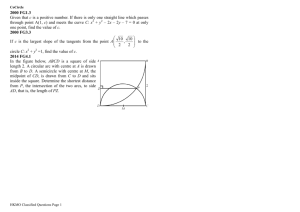
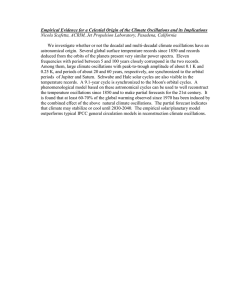
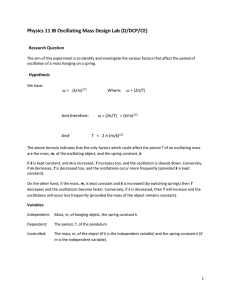



![Solar Forcing and Abrupt Climate Change over the Last 100,000... Jose A. Rial [] and Ming Yang [], University of](http://s2.studylib.net/store/data/012739005_1-c337c3e26293ae14faa36e511979b340-300x300.png)
